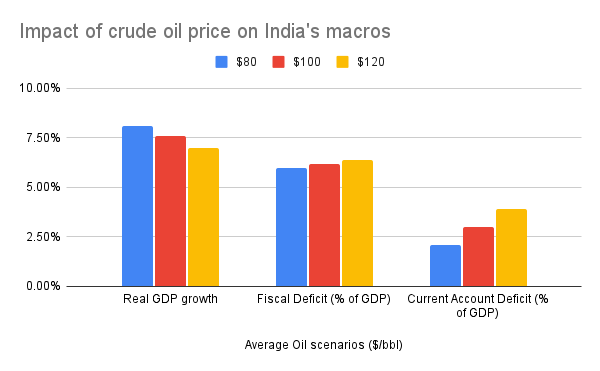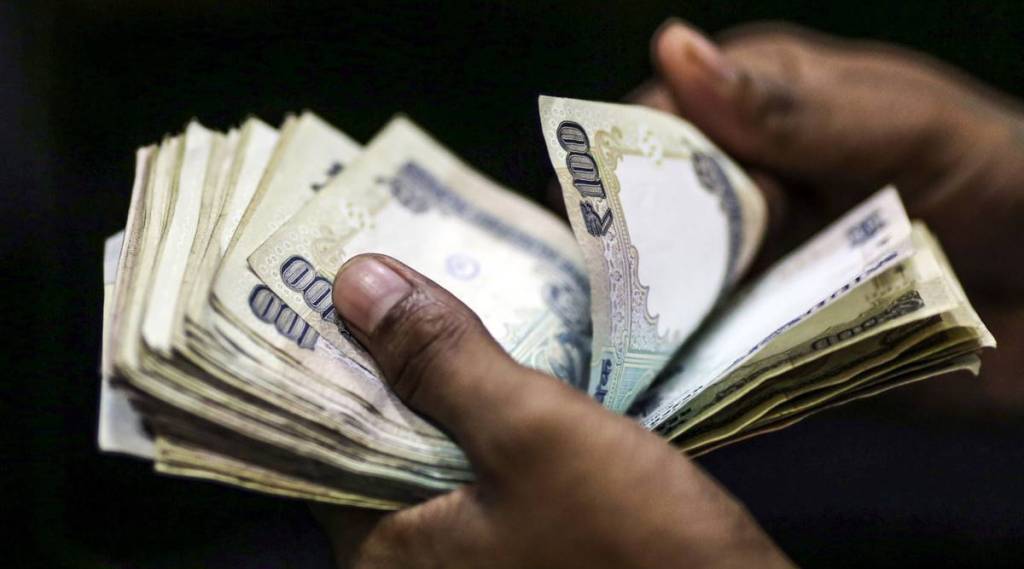Indian rupee is expected to weaken in coming days as high crude oil prices continue to weigh on net-oil importer India, experts said, adding that it will remain under pressure until the conflict between Russia and Ukraine is resolved. India depends on imported crude oil for 80% of its domestic requirements, and an increase in oil prices means that more dollars would be needed to import the oil. High oil prices thus put pressure on foreign exchange reserves. India, with its $622 billion foreign exchange reserves, however, has enough buffer to protect it from external volatility, experts added.

Where is the Indian rupee headed towards?
Kotak Mahindra Bank expects USD-INR trade in the range of Rs 75 to Rs 77.50 per USD in the months ahead. ICRA expects the USD-INR cross rate to trade in a range of Rs 75 to Rs 78 per USD until the conflict in Ukraine subsides. But in the case of a protracted conflict in the Eastern European nation, wherein oil prices remain at about $115 a barrel, the USD-INR cross rate is likely to trade in a range of Rs 76.0 to Rs 79 per dollar, ICRA.
“Going forward, elevated crude oil and commodity prices, ongoing geopolitical tensions between Russia and Ukraine, and pessimistic sentiments in global markets, along with a stronger US$, could further have a negative impact on the INR,” according to ICRA Ltd. The rating agency added that even though elevated commodity prices will impart a depreciating bias to the INR, large forex reserves are likely to avert a sudden sharp weakening.
RBI intervention may release pressure
India’s foreign exchange reserves fell by $9.64 billion to $622.275 billion during the week ending March 11, 2022, as the rupee depreciated against the US dollar amid the rise in crude oil prices and capital outflows due to sustained selling by foreign portfolio investors. However, RBI’s intervention by conducting the USD-INR swap auction helped the rupee from depreciating further.
Kotak said India’s $622 bln forex reserves should be sufficient to shield the economy against any major external shock, especially when the vulnerability indicators remain well in check. Apart from high foreign exchange reserves, India has an import cover of 11.5 months, and external debt as a perchange of foreign exchange reserves is 93%, it said.
“While we expect RBI to intervene intermittently, we note that the direction and magnitude of the INR will move in sync with the rest of the EM (emerging markets) pack,” Kotak said. “Limiting the INR weakness through FX intervention would aid multiple objectives through (1) limiting the pass-through of imported inflation given the surge in input prices, (2) creating room to support the government’s heavy borrowing program,” it added.
So far this year, India rupee has been among the weaker performing EM currencies in comparison to US dollar- behind Russian Rouble, Sri Lankan Rupee, Turkish Lira, and Philippine Peso. Rouble has depreciated 47.1% against the dollar, while rupee has depreciated 2.6% against the greenback so far, according to ICRA.

